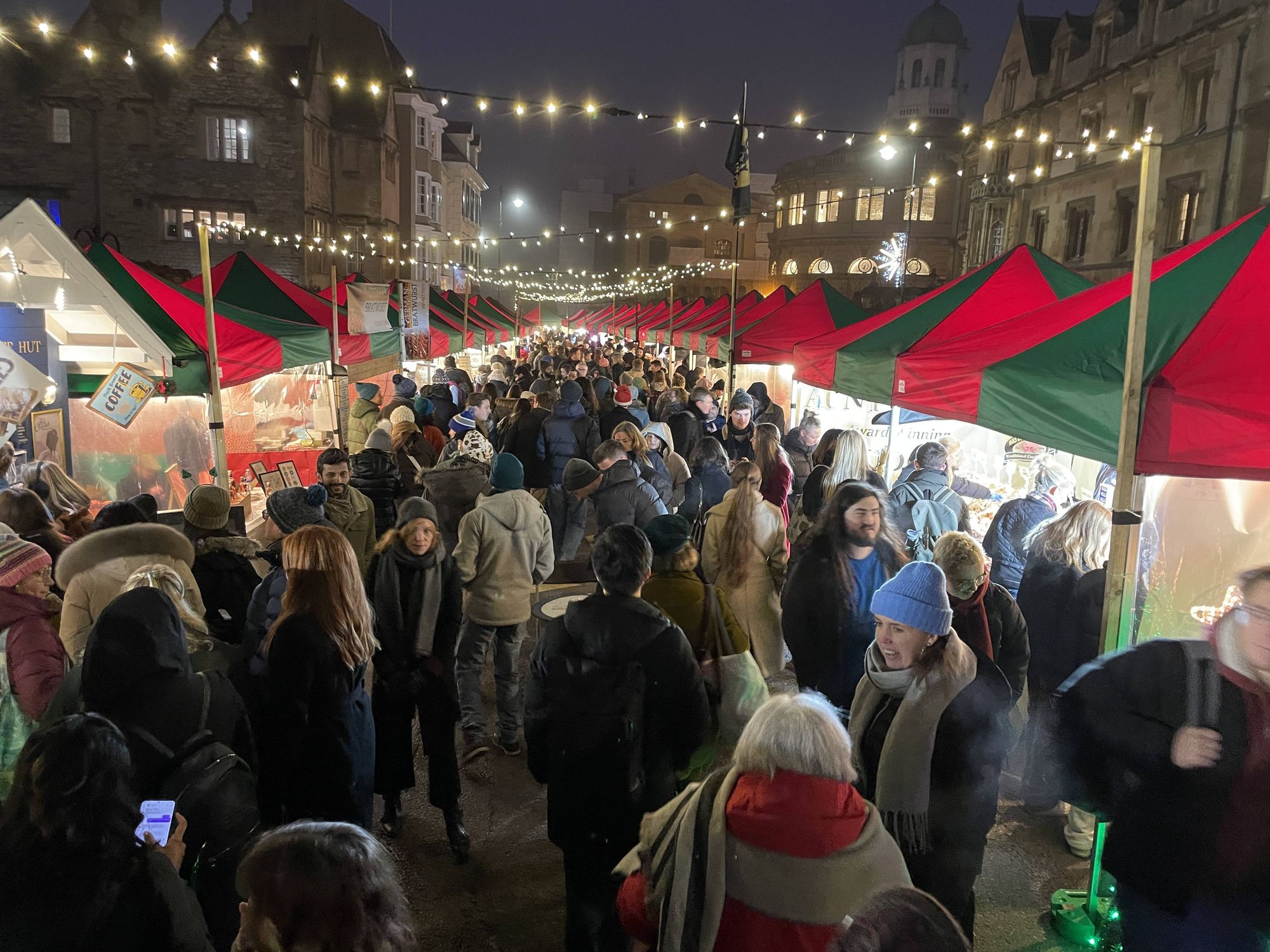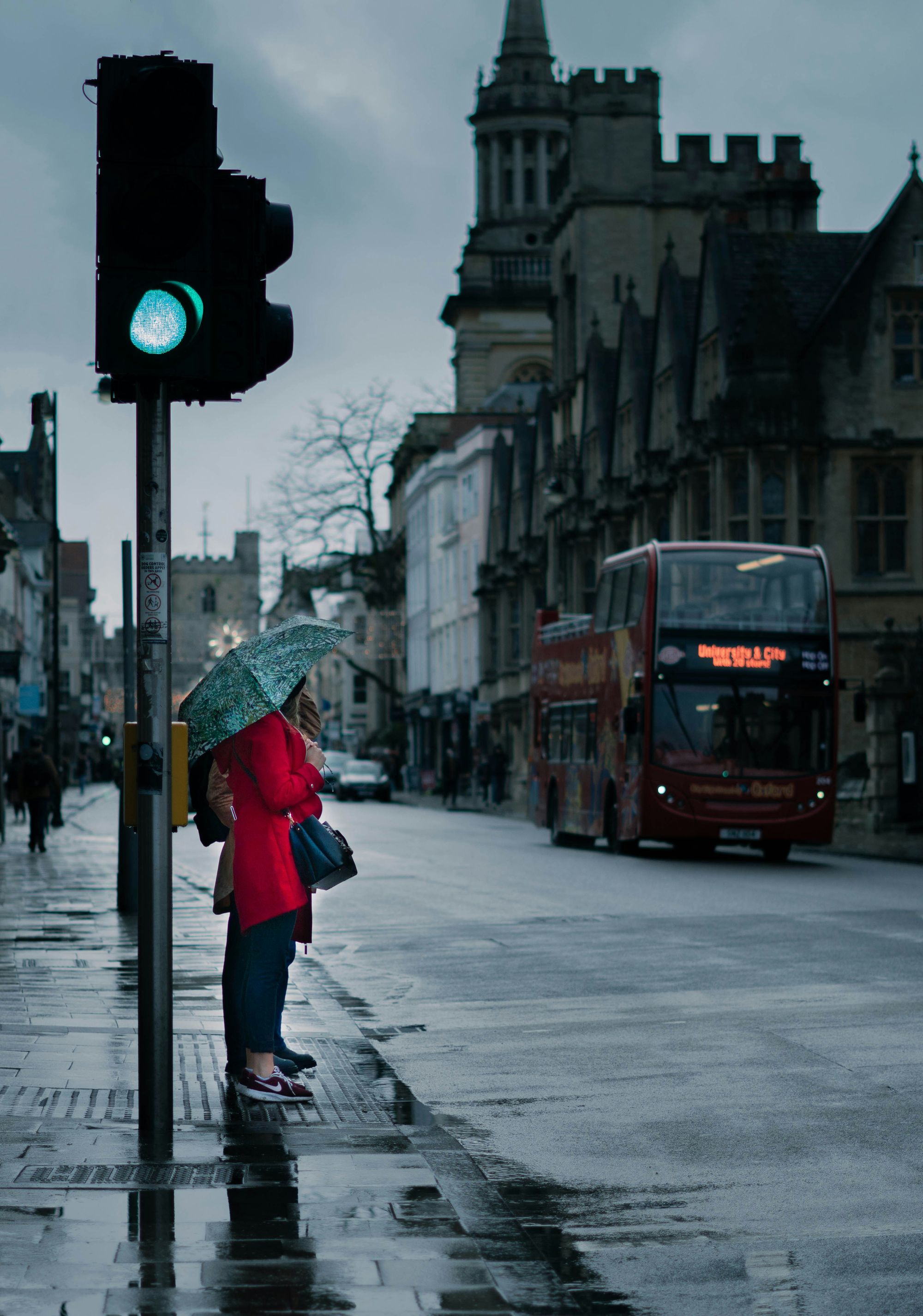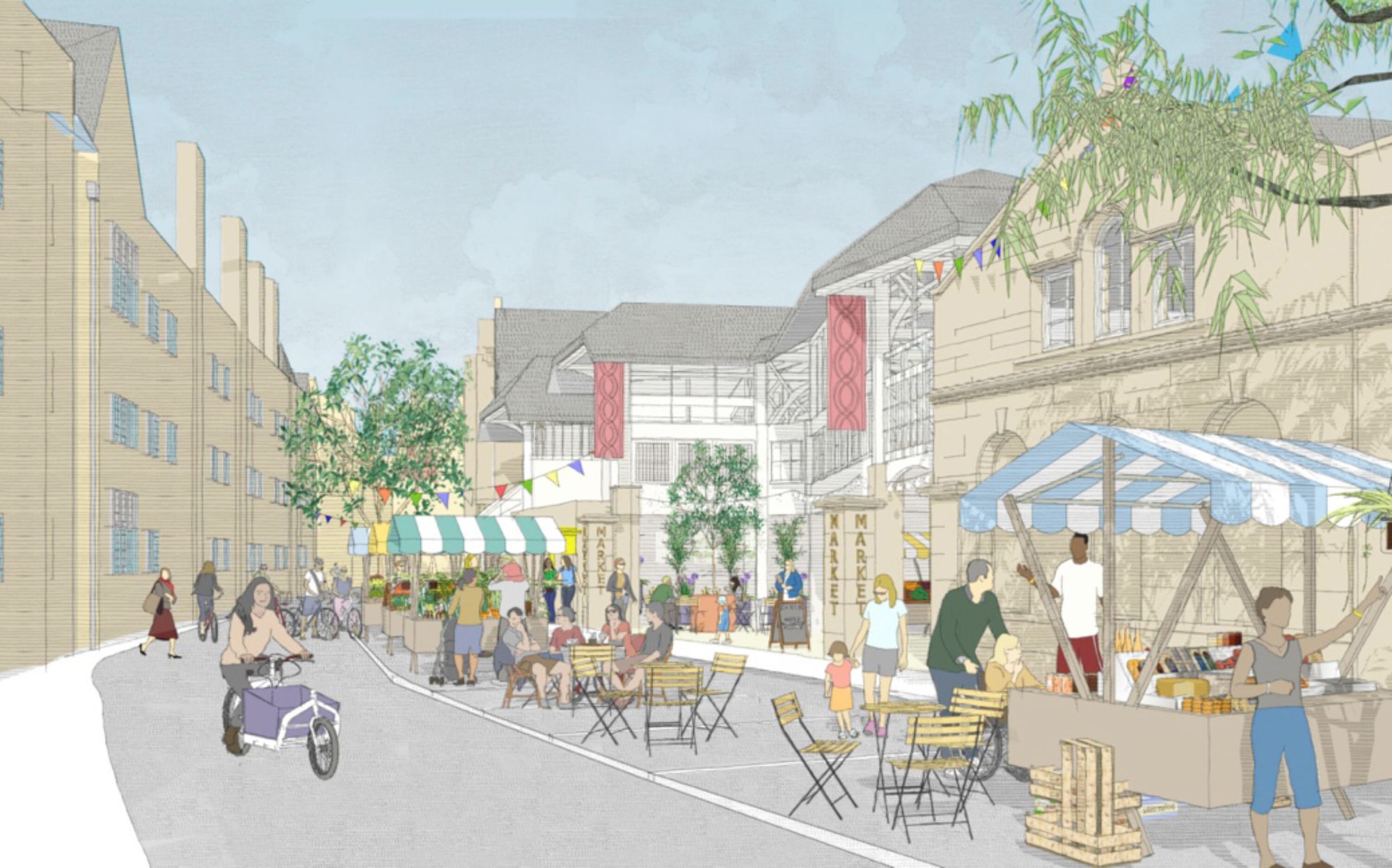Oxford retail bucks the national trend over Christmas

Oxford city centre dramatically outperformed the rest of the UK in terms of footfall over the last four months, which contain the crucial Christmas and January shopping periods.
In early December, Oxford City Council reported that the previous quarter’s footfall had beaten the national average. Looking towards Christmas, it drew attention to the festivities including a Christmas Market, seasonally themed events at the Covered Market including late night opening, as well as Christmas lights, family pantomime and events at museums and in the Westgate. There was an extended joint ticketing and parking offer for the Park and Ride, and the council highlighted the ways shoppers could walk or cycle to enjoy the festivities.

Has it worked? Data obtained by the Oxford Clarion suggests it has.
We compared Oxford figures to British Retail Consortium data for national footfall across December, January and February:

In December, footfall across the UK fell by 4.2%. Helen Dickinson, Chief Executive of the British Retail Consortium, said December’s heavy rain meant shoppers pivoted to purchase online. This led to a decline in footfall levels compared to December 2022, when “there was significant pent-up demand for in-store shopping post Covid restrictions”. The Financial Times also called out the cost of living crisis being a particular problem for UK retail. But while nowhere is immune from this, Oxford’s footfall fell much less – by 1.75%.
Nationally, footfall remained on a downward trajectory in January, albeit at a slower rate than in December, falling by 2.8%. The BRC claimed the first half of the month was boosted by the January sales. However, the latter part of January saw fewer shoppers out as stormy weather and floods led to a bigger footfall decline across the nation. Conversely, Oxford’s footfall grew by + 1.14% year on year.
Then in February, the BRC hailed the greatest decline in footfall since the pandemic, -6.2%. Attributing this to a wet February – remember yet more floods in Oxfordshire? – and train strikes, they called on the government to do more to encourage tourist trade. But Oxford’s footfall actually increased, by 3.7% year on year.

Predicting the future is a risky business. But there is a long list of committed schemes that look set to increase footfall in Oxford still further. Redevelopment at the Covered Market is expected to begin this spring with the trial of a car-free Market Street. The Store Hotel is due to open on 7 May in the former Boswells, with 101 rooms. Tenants are already signed up for the redeveloped Clarendon Centre while the former Debenham’s site is set to become office and lab space, providing further weekday trade for city centre stores.
Oxford’s strong performance can also be set in the context of recent transport changes – particularly the removal of city centre parking from Broad Street, and the ongoing closure of Botley Road railway bridge, blocking the most popular car route to the Westgate Centre. Both measures restrict private car access to the city centre, yet despite this, footfall outperformed the rest of the country. It’s a fact that will not be lost on the councillors and transport planners due to press ‘go’ on the traffic filters later this year.

